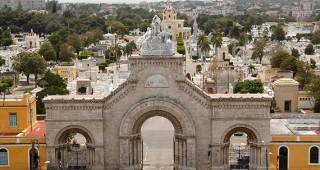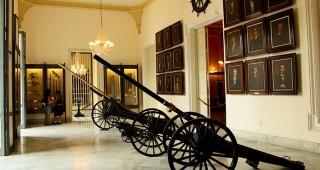Made up of a church, a convent and a peculiar vaulted arch, this religious complex is the most extensive of those surviving in Old Havana. After the arrival in Havana of the first members of the Order of Bethlehem, arrangements were made to build a convent for them with the collection of alms and the contribution of Bishop Diego Evelino de Compostela. The edifice was completed in 1718 and served as headquarters for this religious community until 1842 when the property was confiscated by the Spanish colonial government.
The building was occupied by the vice-captain general and by an infantry battalion until 1854 when the Society of Jesus was re-established and the Jesuits took possession of the convent in compensation for the property that had been confiscated a century before. Historian Félix Arrate spoke with much respect of this church whose ground plan had the shape of a cross, domed ceiling, and stone statues and pictures of religious figures, home today of the Office for Humanitarian Affairs of the City Historian’s Office.
The unusual vaulted arch, built in 1775 over Calle Acosta to the south, connects the convent with its neighbouring buildings. The original church is now restored and open for visits, but five of the six cloisters are under restoration as an old people’s home, a hostel and a junior high school.
More extraordinary is the Real Observatorio (Royal Observatory), built in 1858 on top of the tower of the school, and used continuously until 1925. The Jesuits were Cuba’s first official weather forecasters and used the observatory for the study of hurricanes and other tropical weather patterns. The observatory was the first of its kind in the Caribbean and, over time, became one of the most important weather stations in the Americas. It is currently under restoration as the future Museo de Meteorología y Astronomía.












 Eclectic
Eclectic







